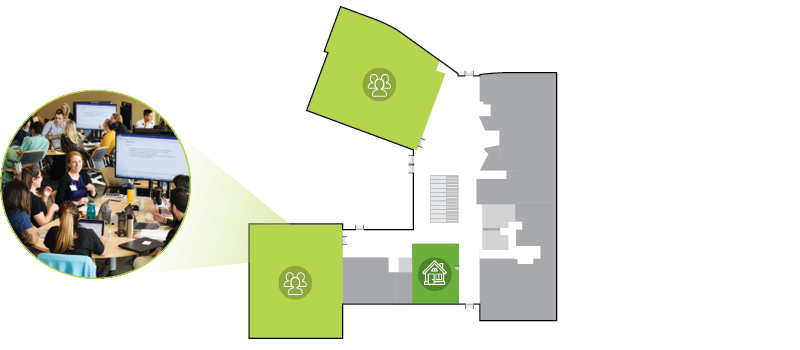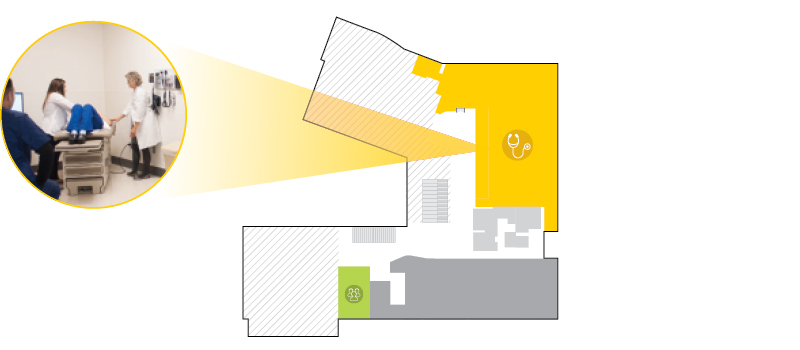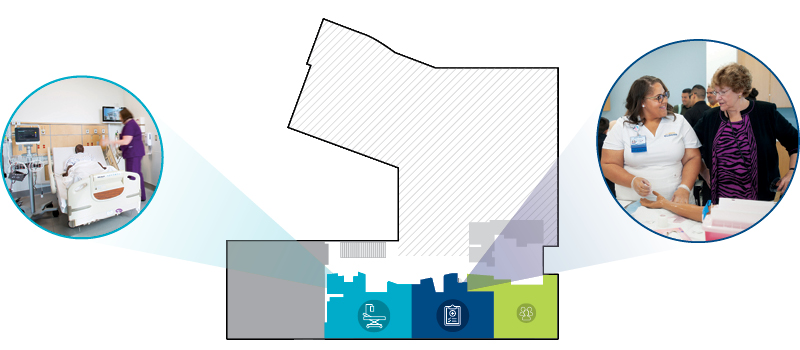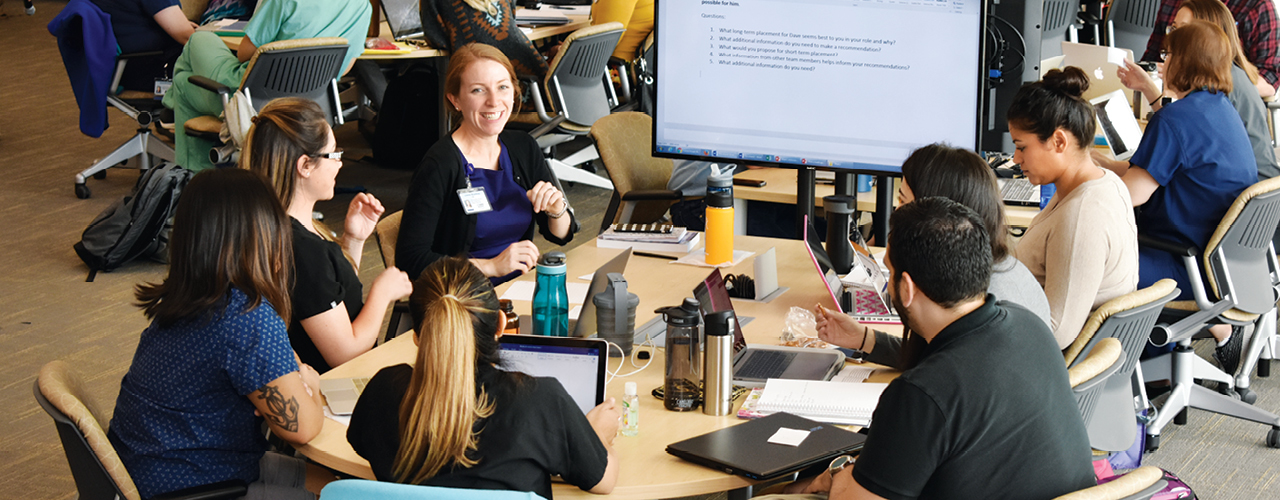Transformative education,
in bricks and mortar
Some of the innovative learning features of the new Betty Irene Moore Hall, a state-of-the-science facility supporting nursing and health sciences education at UC Davis.

Floor One
Active learning classrooms These non-traditional spaces are designed to encourage collaboration and group learning.
- Propeller-shaped tables
- Writable walls
- High-tech audio-visual tools
- Flexibility for multiple group and individual discussions
Home health simulation suite This one-bedroom apartment suite helps prepare health professionals to care for people in their own homes.
- Furnished rooms — including a fully-functioning kitchen and bathroom — mimic the home environment
- Half walls and a high-tech debrief area promote watch-and-learn activities
- Includes stairways, ramps and other mobility challenges for training

Floor Two
Primary care clinic simulation suite This suite of 15 exam rooms helps future providers learn how to care for and communicate with patients and families. Each exam room is complemented by a debrief room, allowing for discussions after the clinic encounter that develop critical thinking and decision-making skills.
- Realistic environment, including a waiting room
- Audio-visual capabilities with connectivity between exam and debrief rooms
- Support for both high-fidelity mannequins and patient actors

Floor Three
Hospital ward simulation suite Students experience clinical-care situations in real time through simulations that range from common, clinical procedures to rare and complex health conditions or life-threatening emergencies.
- 8-bed hospital ward
- Intensive care room
- Audio-visual capabilities to promote watch-and-learn activities
Task training lab This flexible space helps students learn basic skills — such as suturing, starting an IV or placing a catheter — through repeated practice. Students use lifelike models and training devices to break down a specific task into easily grasped actions.


